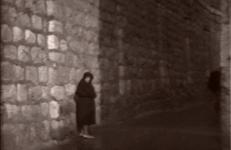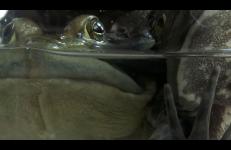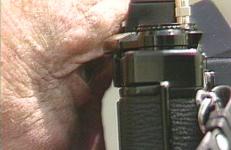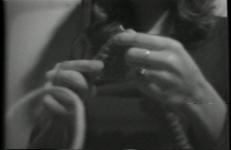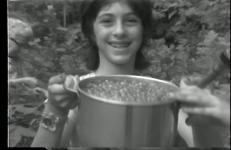Everglades is a project Levy began while a resident artist in Florida's Everglades National Park. The unique natural environment of the Everglades has been devastated by decades of wetlands drainage for purposes of industrial and residential development, and today it is threatened by fracking and deep water drilling. At the same time, efforts have been made to restore some of the original ecosystems through a process of re-flooding, not unlike the restoration of Lake Hula in the north of Israel.
Documentation
Videofreex members Davidson Gigliotti, Bart Friedman, Skip Blumberg and Nancy Cain travel to Syracuse, New York to attend an exhibition and two-day conference featuring video art at the Everson Museum of Art held from April 4-7, 1974. More than simply recording this event known formally as “Video and the Museum,” the tape poignantly highlights the ways in which the Freex—by wielding a video camera—simultaneously become art world archivists, video collaborators, and on-the-ground reporters of culture and art in the 1970s.
A rumination via handwritten index cards and an assortment of images recalling histories and ambitions of varied film productions.
Consisting of 13 brief spots, Experience: Perception, Interpretation, Illusion features works by artists included in a Pasadena Armory exhibition. Curator Noel Korten explains that the artists in the show have all reached mid-career and are now less concerned with expanding the boundaries of contemporary art than on reflecting back on culture through their own perspectives. Artists include Karen Carsen, John Outterbridge, Michael C.
In collaboration with art historian Dore Bowen, a video recording of her phone interview with Yoko Ono during which a discussion of John Cage and chance operations intervene. Shot in 2002, this document was released in 2007.
In 1975, the Feminist Studio Workshop (I was a member) at the Woman’s Building in LA, the Women’s Interart Center in New York City, and another feminist organization in Washington DC, attempted to set up a video exchange among feminist art organizations. This was the first videoletter on our end. I don’t know if another one was ever made.
The videoletter is a tour of the Woman’s Building. Pam McDonald, with microphone in hand, another workshop member, and myself, served as guides through the building. It was shot with a black and white video portopack.
Karen Finley is well known for her confrontational monologues, often performed in clubs and bars, which exploit the stereotype of the hysterical woman to address the sexual and political taboos associated with femininity. Using a variety of unusual props, such as Jello, chocolate syrup, stuffed animals, and glitter, Finley provokes her audience into thinking about a range of repressions and contradictions in contemporary society. She gained mainstream attention when Congress questioned her NEA funding in the early 1990s.
Interview by Tom Jaremba.
Richard Ross discusses his interest in photographing museums—their display of objects, frames, the entire context—in order to question our definitions of the museum. The video also covers his ongoing series of triptychs made using a child’s plastic camera, which Ross turns into “art historical soap operas” by playing off the interactions of the groupings.
Only available on the Fellows of Contemporary Art compilation.
Rare footage of a September 1970 rally honoring the late Fred Hampton, Deputy Chairman of the Illinois chapter of the Black Panther Party. One of the speakers leads the audience in a call and response.
From The Files of the Pyramid Cocktail Lounge is a series of video clips taken at the Pyramid Club, a seminal location for the East Village drag scene in the midst of the club's most influential years. While rummaging through a file cabinet full of event fliers from the Pyramid Club, an office worker in drag guides the viewer through video documentation of past performances at the club.
Gravity Hill Newsreels: Occupy Wall Street comprises Jem Cohen’s twelve-part series as a continuous and complete compilation. Cohen, who witnessed the New York occupation from day one, borrowed a digital camera and started gathering footage in subsequent weeks. Initially acting upon an instinctive impulse to document and be guided by the events of the movement through quiet participation, Cohen’s documentation took a more public and expansive form through an agreement with the IFC Center, a local movie theater.
In February 1970, the Freex visit the garage of the Hells Angels to informally discuss American politics and motorcycle maintenance. In this video, David Cort leads an extensive interview with the group’s president, Sandy Alexander.
In this tape, shot in August 1970, a number of Hells Angels are interviewed on the street in New York City. They talk about their bikes and their preparations for a “run”, and their reactions to the way they are portrayed by the mainstream media.
In 1998, Zaatari interviewed Egyptian photographer Van Leo in Cairo. In 2001 he made the video Her + Him Van Leo and based it on the story of a woman who once entered Studio Van Leo and asked the artist to take pictures of her naked. At the time, Zaatari had access to a few of the woman's twelve pictures. In 2010 Zaatari came across the entire series showing "Nadia" undressing in twelve poses and expanded the original work into this HD remastered version.
Welcome to The History of the Future: A Franklin Furnace View of Performance Art. This disc set is based upon a live event that took place at the Abrons Art Center in New York City on April 27, 2007. Within this box set, you'll find performances from that event as well as historical videos that capture the thrills and chills of performance art during the last 30 years.
"Bricks are the resonating fundamentals of society. Bricks are layers of clay that sound like records, just simply too thick. Like records they appear in series, but every brick is slightly different – not just another brick in the wall. Bricks create spaces, organize social relations and store knowledge on social structures. They resonate in a way that tells us if they are good enough or not. Bricks form the fundamental sound of our societies, but we haven't learned to listen to them.
Shot in December 1969, this video documents a live performance by the Incredible String Band at the Fillmore East, NYC. Beginning with footage of people waiting in line at the doors before the show begins, the video goes on to record the performance itself. Early on, the band experiences some audio problems, before settling down to play. We witness the band talking, tuning their instruments and playing.
In 1971 the curator Allon Schoerner was commissioned by Hadassah, a Jewish women’s organization, to create an exhibition about Jerusalem for the Jewish Museum in New York City. As part of this endeavor, three artists were sent overseas to document the city: David Cort of the Videofreex, young media artist Shalom Gorewitz, and photographer and light show artist Bob Quinn.
This five-DVD set compiles all the raw footage shot on this journey.
David Cort of the Videofreex travels to Jerusalem. This tape contains raw footage of him as he is taken on a tour through a poor neighborhood by a group of young men. There is talk of the Israeli Black Panther Party, and of drug dealers and poverty. Somebody says the tape is being made for the Jewish Museum in NYC. The Israeli guide talks about the movement, and says the bourgeois and the poor can meet through parties and drugs. They visit a woman and her children who are living in poverty, and interview her about the needs of her family.
During Videofreex member David Cort's travels to Jerusalem, a scene was shot in a hospital where a female patient is having electrodes attached to her body. The cameraman gets on the cot and has the electrodes attached to him as they talk about making a brain feedback machine for use at home. The next scene records the cameraman walking the streets of Jerusalem. People passing by interact with the camera.
In this short video, the Videofreex sit in on, and record part of, a lecture given by Jesse Ritter to undergraduate students at Princeton University in 1969. In the snippet of the lecture recorded, Ritter discusses Richard “Lord” Buckley, a 20th century American stage performer, recording artist, monologist, and hip poet/comic, whose contributions in the 1940s and 50s anticipated the aesthetic sensibilities of the Beat Generation.
A pioneer of the small-format camera, Andre Kertesz’s photographic vision shaped the course of contemporary photojournalism. Self-taught and non-conformist, he began photographing in Hungary in 1912 and remained there until 1925, at which time he moved to Paris. In 1936 he moved to New York City, where he felt displaced and forgotten. It wasn’t until 1964 that he was “rediscovered” and began showing in London, Paris, and New York. This video was shot five weeks before Kertesz’s death in 1985 at the age of 91.
Eerily drifting through soft fades, superimposed images, close-ups, and visual feedback, this tape follows less a narrative structure and more a stringing together of seemingly random activities, set against two very different soundtracks. The video opens with David Cort reclining on the ground as psychedelic rock plays in the background. Two shots alternate between frontal and profile as he lazily plays with his beard and face – the streams of footage melding together with the use of live editing.
“Trolling for news we call it,” says Bart Friedman a minute into this video, as he pushes down a road the Lanesville TV News Buggy – a baby carriage filled with video equipment, spilling over with wires. The buggy allows for easy transportation of equipment as the Videofreex make their way throughout Lanesville, interviewing residents on their daily activity. Although fairly ordinary – a visit to the lake, a small bit about a neighbor’s new electric golf cart, and an introduction to a newborn baby – the footage has an air of genuineness and all of the interactions are amicable.




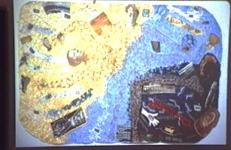
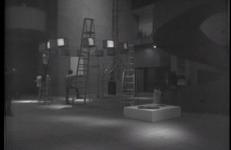
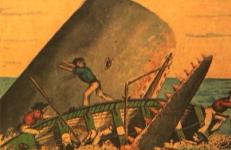
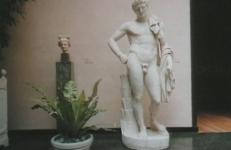
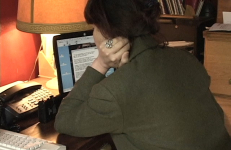
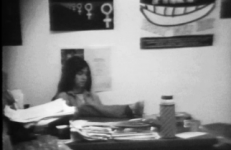
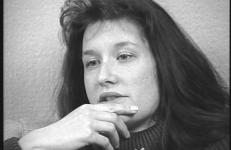

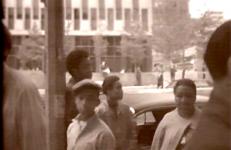
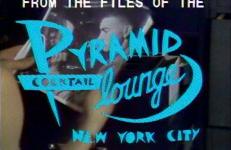
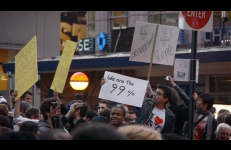
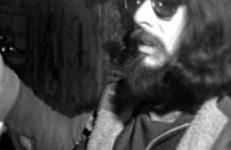
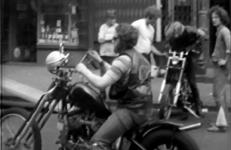
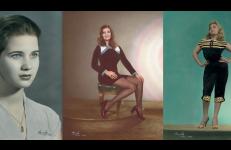
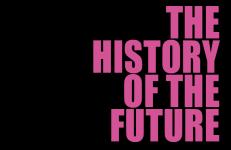

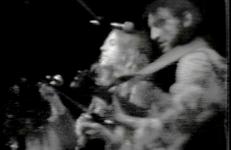
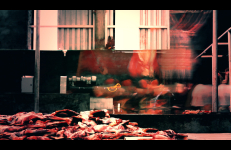
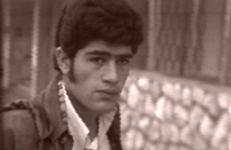
![Videofreex, Jerusalem Tapes: [Israeli] Black Panther on the Street Jerusalem Tapes: [Israeli] Black Panther on the Street](/sites/default/files/styles/215x140/public/images/jerusalemt.jpg?itok=_EmJohyE)
